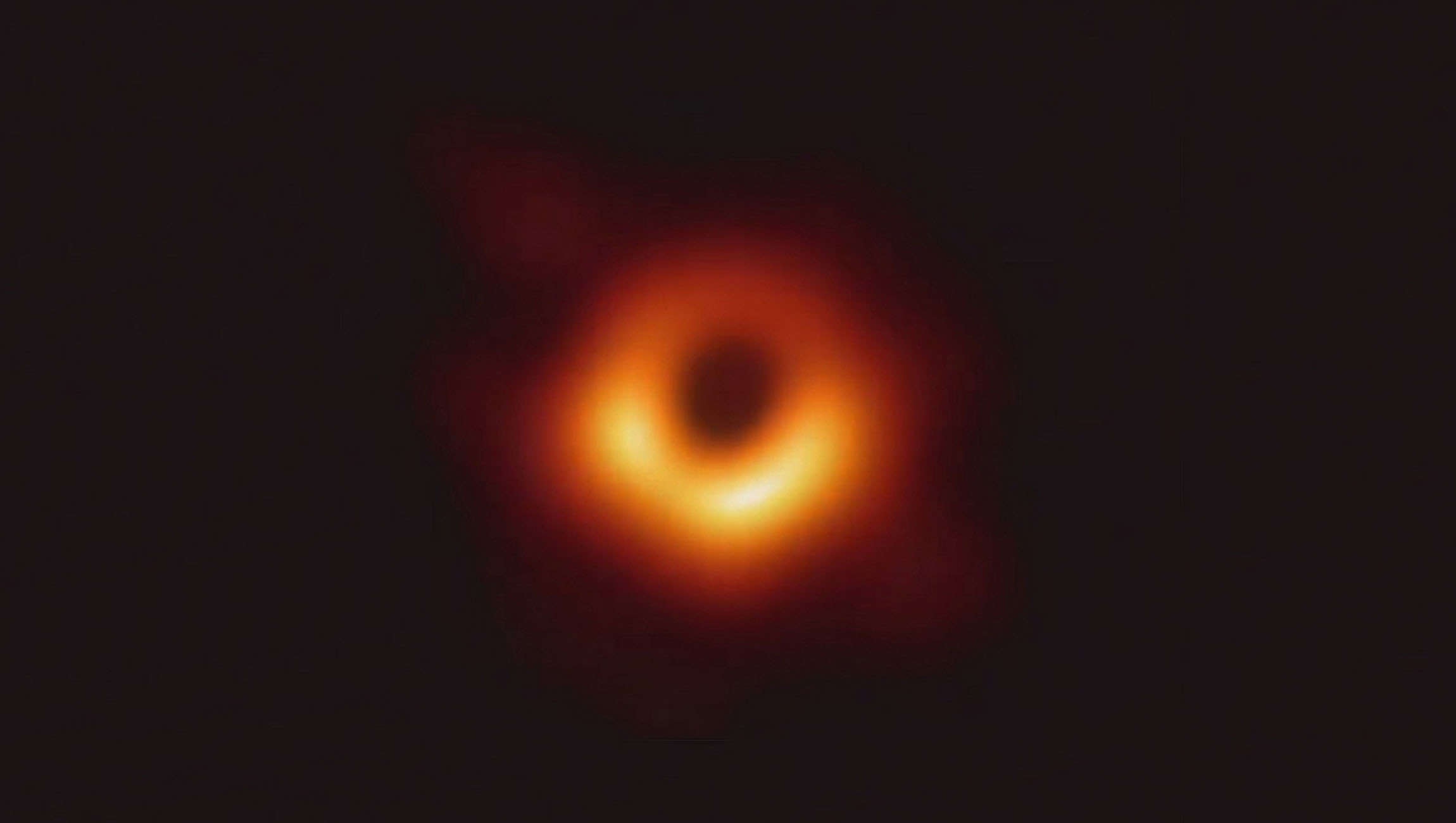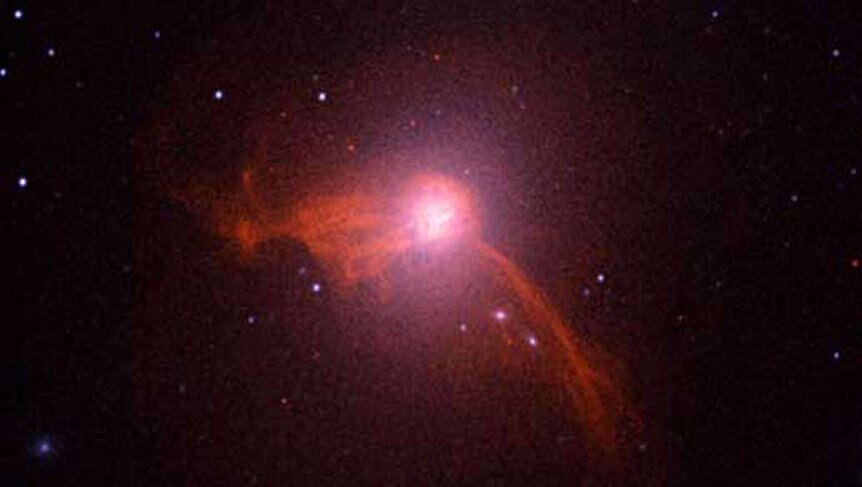Create a free profile to get unlimited access to exclusive videos, sweepstakes, and more!
Space opera: How black holes film and play epic movies of the universe

Star Wars has nothing on a space opera filmed in space, by forces in space. When that breakthrough image of the M87 supermassive black hole (above) from the Event Horizon Telescope broke the internet last year, scientists were even more baffled about these collapsed stars than they were before. What was that fuzzy glowing ring around the shadow of the event horizon? Radio astronomer Michael Johnson and an interdisciplinary team of scientists found the answer in photon rings, or rings of light that are warped by the black hole’s gravity and then play back what they reflect of its surroundings in an infinite movie reel.
“Neglecting opacity, a telescope with the perfect resolution directed at a black hole observes an infinite number of nested images of the universe,” Johnson said in a study he co-authored, which was recently published in Instrumentation and Methods for Astrophysics. These images arise from photons that [orbit] around the black hole on the way from their source to the [telescope].”
Black hole subrings aren’t completely circular. They are warped by spacetime spinning around the black hole, and the subring at the forefront appears to be the brightest, while the subrings that come after it approach the shadow of the event horizon — the point of no return from which neither light nor anything else can escape. New subrings arise about every six days. These subrings “film” the history of the universe (at least what we can see of the universe) from the point of view of the black hole. It is the properties of the black holes the determine the size and shape of these rings, which could open an entire new portal into the study of black holes.
M87 is believed to be about 6.5 billion solar masses. That has a 15 percent margin of error, but figuring out the thickness of photon rings could be the new way of coming up with a more precise type of measurement that has never been thought of before.
“Together, the subrings then form a cascade of damped oscillations on progressively longer baselines, each dom- inated by the image of a single subring and conveying precise information about its diameter, thickness, and angular profile,” the scientists said.
The rings’ spacetime-warped shapes could also tell scientists about a black hole’s spin. An accurate idea of a black hole’s spin could go deeper into its history. A high overall spin indicates the black hole had leveled up its rotation by glutting itself on swirling gas from its host galaxy, while a low spin means that a gargantuan black hole like M87 is actually an amalgam of several smaller black holes that collided. Photon rings that reveal a black hole’s spin open up yet another possibility. The spin itself may hold the answer to how black holes spew out immensely powerful jets of material.
Some believe that the black hole’s spin joins forces with magnetic fields that are nearby for the ultimate electric field. This mutant monster then grabs subatomic particles from space and powers them with enough speed to zoom through either end of the black hole, traversing the void at nearly the speed of light.
There is even more that black hole photon rings can illuminate. They might actually be able to test general relativity, which works well on Earth but may or may not prove itself in the whirling, swirling hell around a black hole. How far photon rings are spaced from each other may put general relativity through the most difficult trial it has ever had to face. But what could we actually see if we were to watch these subrings like reels of a movie?
“Each subring contains a separate, exponentially demagnified image of the entire universe, with each subsequent subring capturing the visible universe at an earlier time,” said the scientists.
That might sound like a way to peer into infinity, but don’t expect live footage of the Big Bang. Observers will realistically only be able to see four to six reels depending on where they capture them from. The original M87 black hole image appears as it does because radio signals put it at a certain wavelength. Moving that wavelength slightly might expose at least the first and most visible subring, and creating that view means capturing a short-wave radio signal that is blocked by Earth’s atmosphere except in high elevations with a dry climate (like the South Pole).
The Event Horizon telescope is also going to need some help from a radio telescope floating out in space. Right now, the scientists are thinking that Lagrange Point L2 would be idea. Lagrange points are five known places in the cosmos where objects, such as telescopes, usually stay in place because of specialized gravitational forces that also reduce the need for spacecraft to guzzle fuel while staying aloft. From L2, a radio telescope would be able to study not only the M87 black hole but also Sagittarius A*, our own supermassive black hole and active galactic nucleus.
An infinite movie of space that was filmed form a black hole sounds mind-blowing. Too bad we can’t kick back with a bucket of and watch it popcorn here on Earth.















